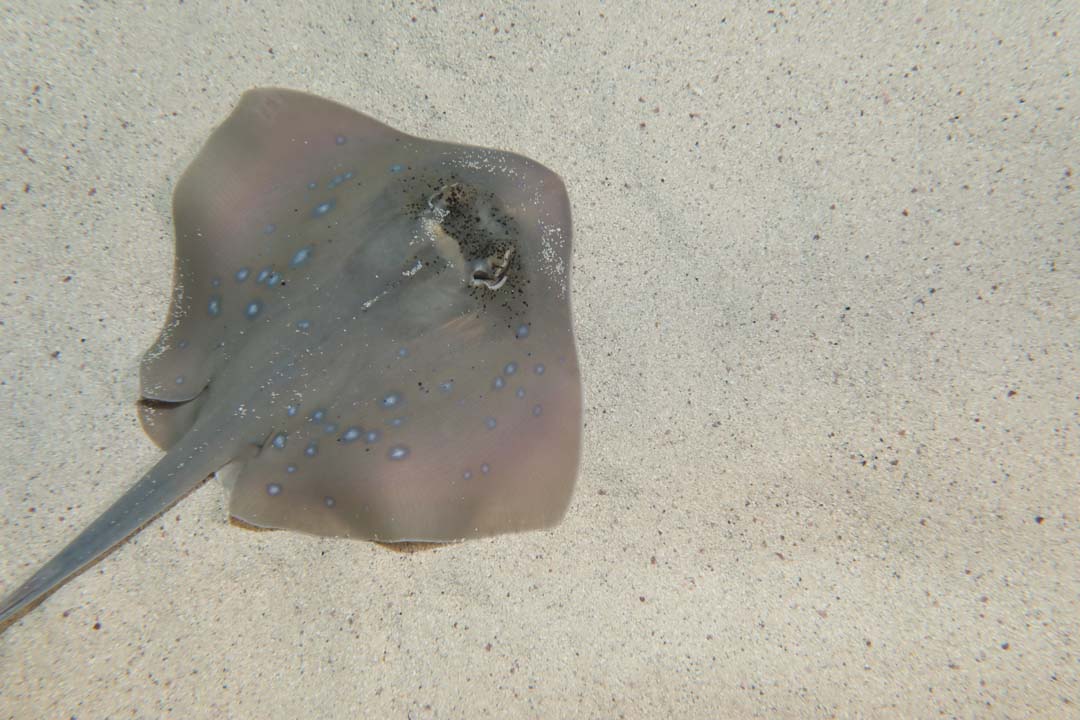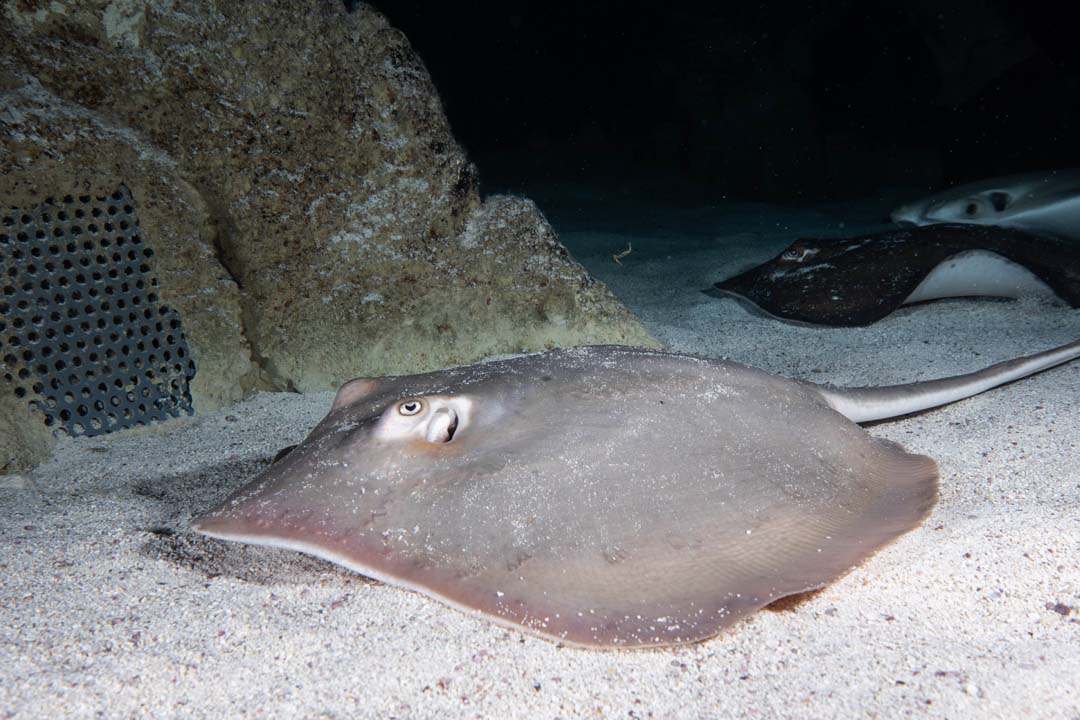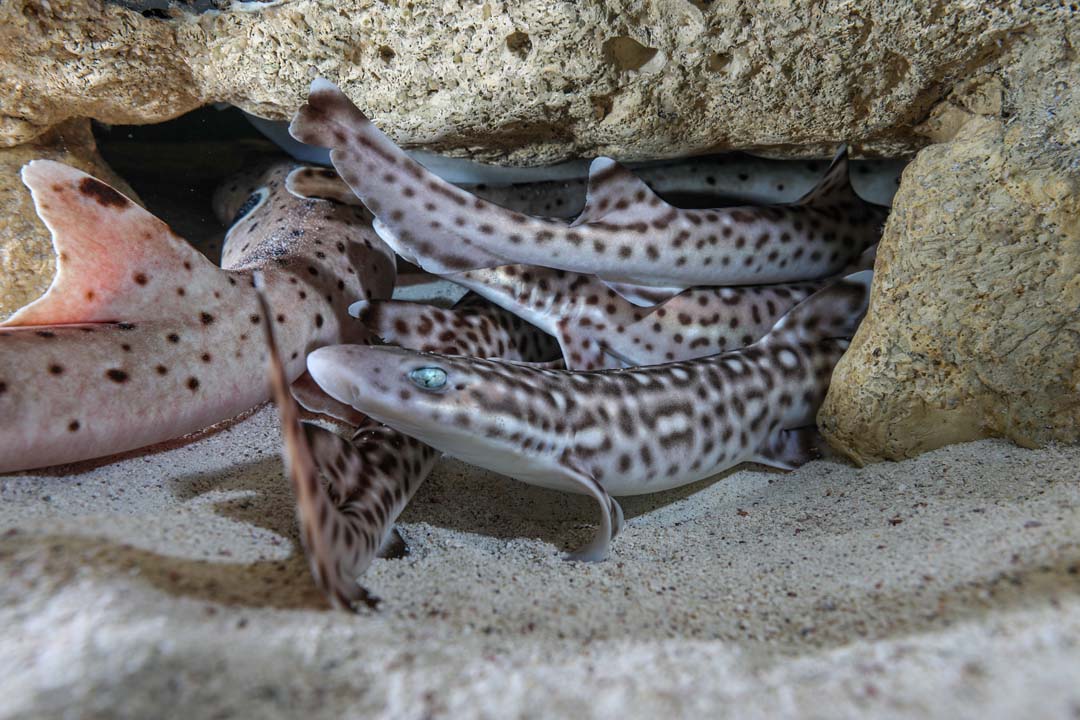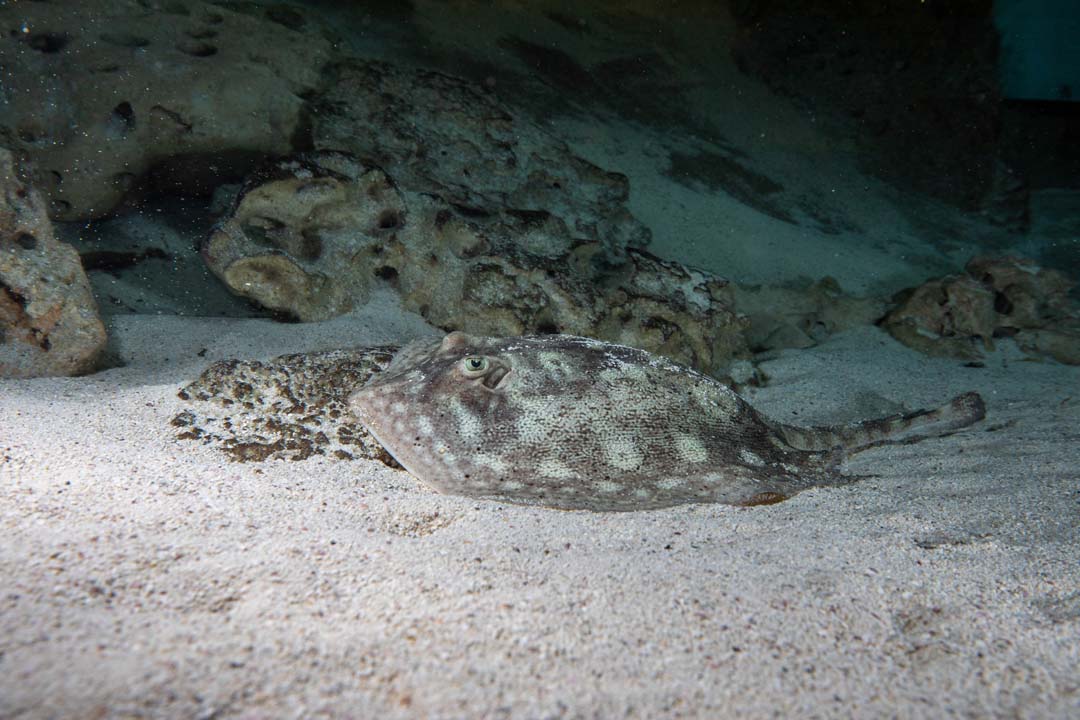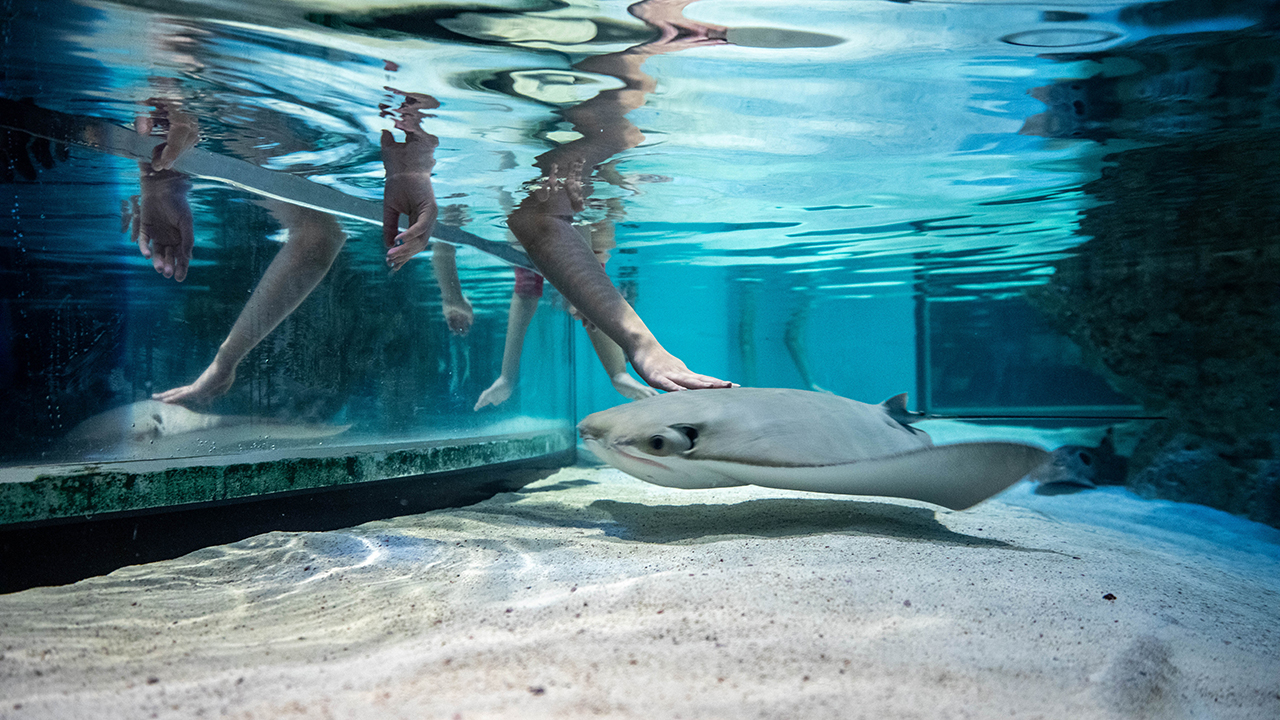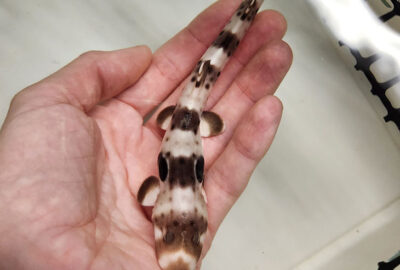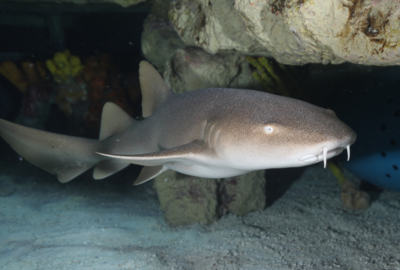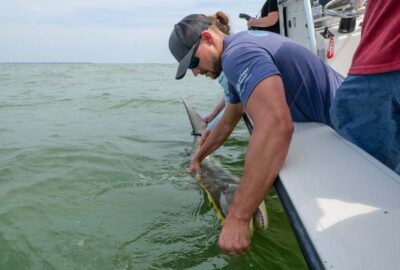Fun Facts About the 10+ Species in our Shark and Ray Touch Tank
One of these sharks uses its fins to “walk” on land. Another is just about two pounds fully grown.
By New England Aquarium on Friday, July 11, 2025

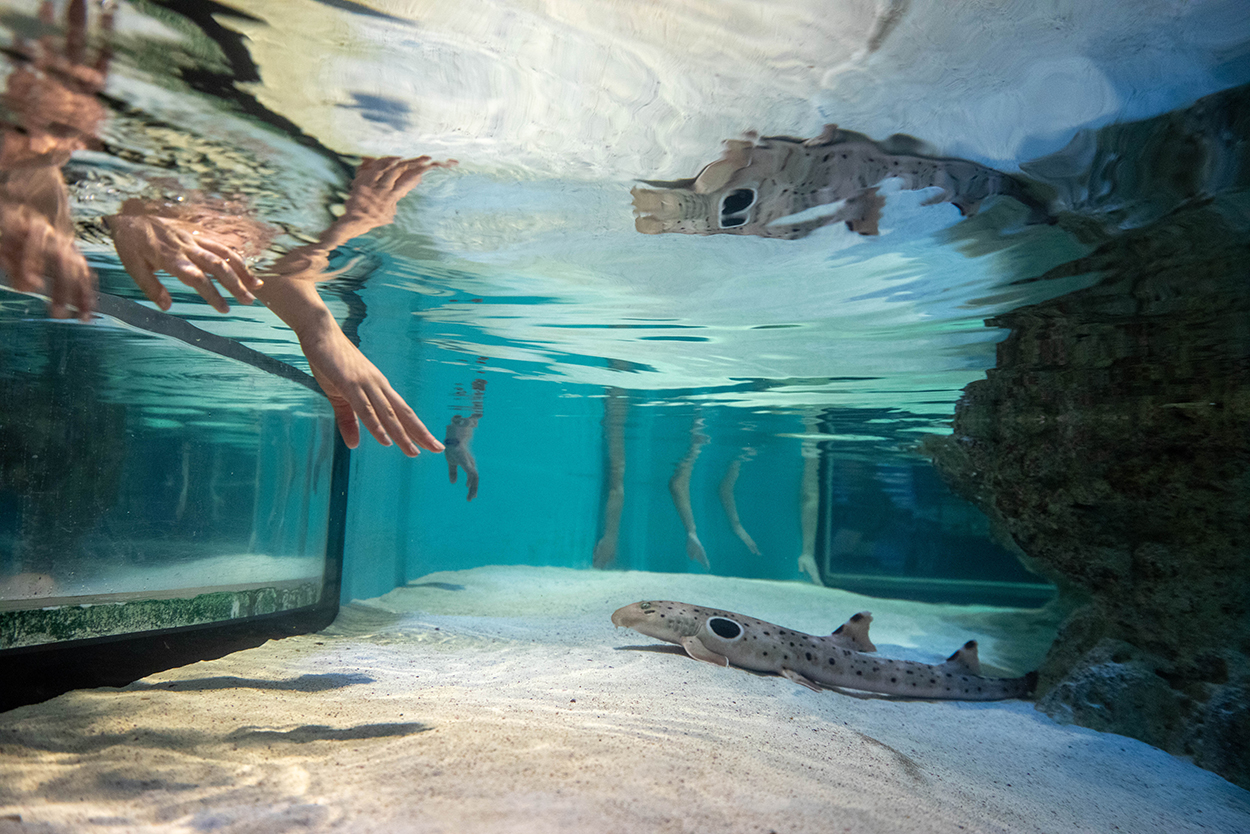
Meaningful moments at the New England Aquarium can spark lifelong connections to the blue planet and inspire ocean advocates—and few experiences are as unforgettable as touching the sharks and rays at our Trust Family Foundation Shark and Ray Touch Tank.
There are about 45 animals in the exhibit, including seven species of rays and four species of sharks. About 70% were born and raised either at the Aquarium through our breeding and rearing programs or at other facilities accredited by the Association of Zoos and Aquariums, ensuring they’ve received top-quality care since birth.
From sharks that “walk” between tide pools to rays that seem to fly through the water with wing-like fins, these species are full of surprises. Get to know the fascinating animals you might spot—or even touch—during your visit.
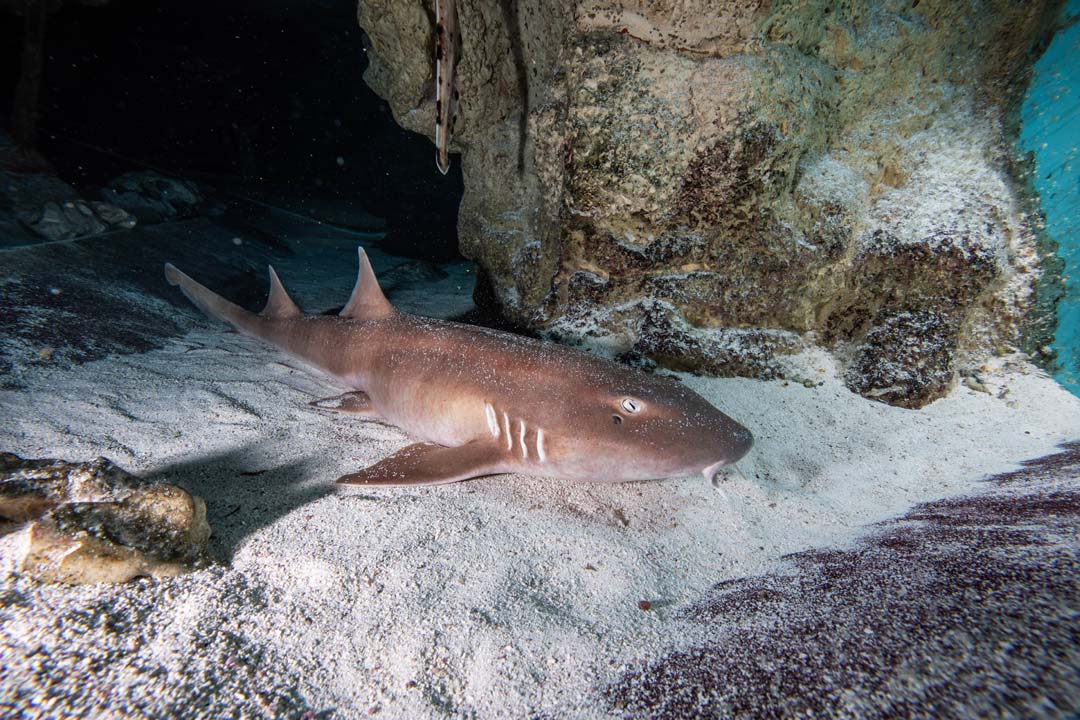
Sharks
Brownbanded bamboo sharks
- The brownbanded bamboo sharks in the Touch Tank exhibit are trained to participate in their own health care by swimming onto an underwater stretcher, which allows Aquarium veterinarians to give them exams right in the exhibit.
- These slender sharks are known for their banding of light and dark brown, but their coloring becomes one solid shade of brown as they mature.

Coral catsharks
- Coral catsharks are the smallest sharks in the Touch Tank exhibit, weighing about one-and-a-half to two pounds.
- These sharks can change color thanks to special skin cells called chromatophores, which contain pigments that can expand or contract to adjust their color patterns. They use this ability for both camouflage and communication, displaying different colors during courtship and territorial disputes.
- Like all sharks in the Touch Tank exhibit, whitespotted bamboo sharks reproduce by laying egg cases, sometimes called a “mermaid’s purse.” You can see these egg cases and recently hatched juveniles at the Aquarium’s Science of Sharks exhibit!
Whitespotted bamboo shark
- Whitespotted bamboo sharks live in shallow coastal waters. Like many shark and ray species, they often rely on mangrove forests—like the one represented in our Touch Tank exhibit—for essential shelter.
- These sharks are about three feet long. While that might seem small for a shark, it’s actually quite typical. About 80% of shark species are under four long!
Epaulette sharks
- Native to Australian tide pools, these sharks can switch off non-essential brain functions to conserve energy in dangerously low-oxygen environments like shallow tide pools.
- Also known as walking sharks, epaulettes use their strong pectoral fins to “walk” along the ocean floor and even on short stretches of land between tide pools.
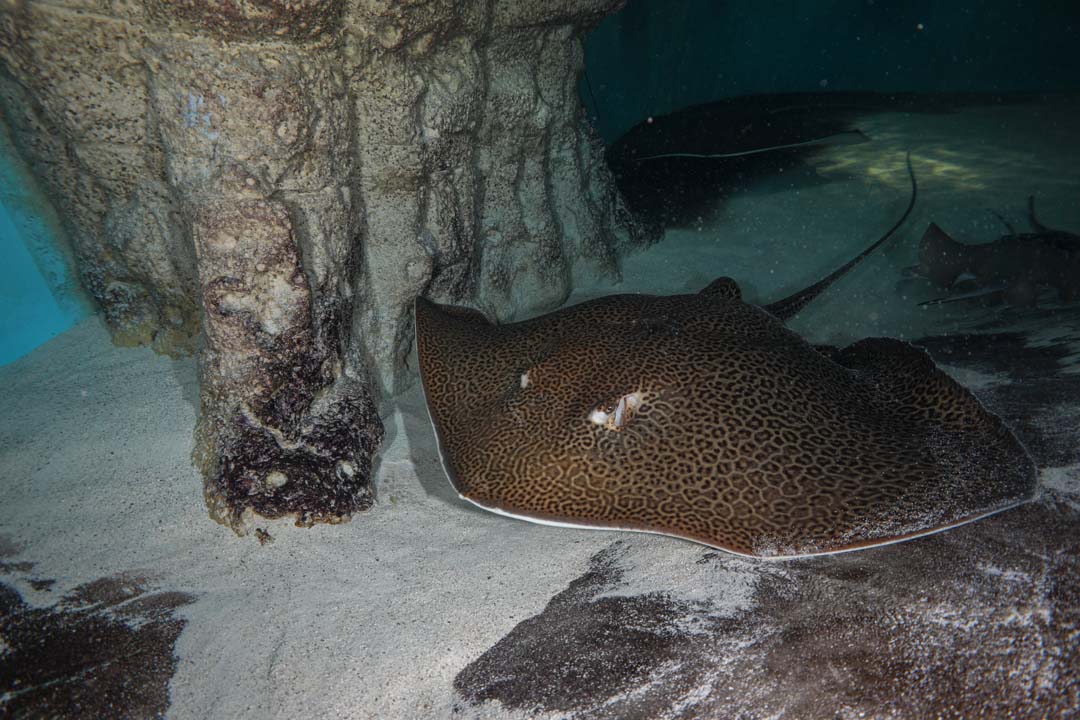
Rays
Leopard whiptail rays
- The largest rays in the Touch Tank exhibit are two whiptail rays, each about four feet wide and 10 feet long—though about six-and-a-half feet of that length is their tail!
- They weigh between 135 and 165 pounds, so aquarists target train them and feed them individually to ensure they get the nutrition they need.
- The male whiptail is the only male in the exhibit.
- The striking leopard-like pattern of these rays develops in adulthood. As youngsters, they are light brown with dark spots.
- They don’t just resemble leopards in appearance—they also have a powerful jaw with up to 59 rows of small, blunt teeth that help them crush delicious shellfish like clams and crabs!
Yellow rays
- Yellow rays are the smallest rays in the Touch Tank exhibit, weighing about three pounds.
- These rays may look ordinary under regular lighting, but under blue light, they glow a greenish yellow—a biofluorescent effect other animals can likely see even when we can’t.
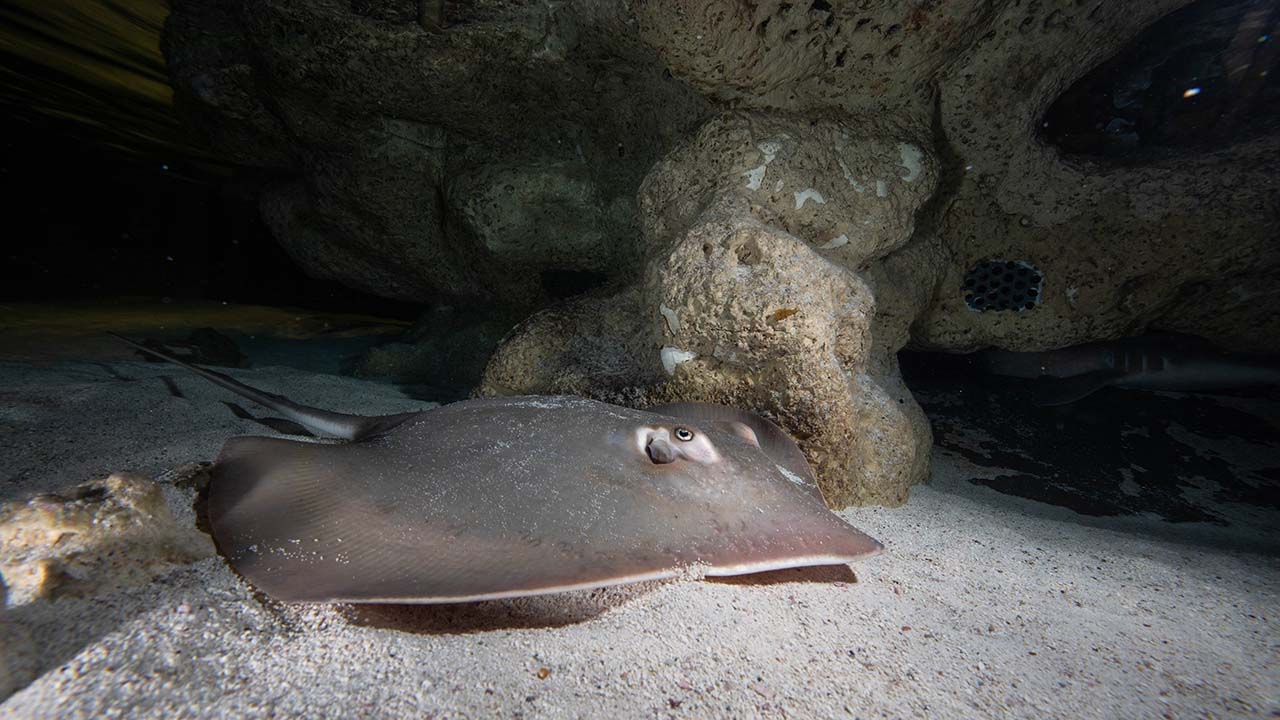
Atlantic rays
- Atlantic rays thrive in a variety of salinities, from the salty sea to brackish estuaries. Unlike most rays, they can even be found in freshwater, such as the St. Johns River in Florida.
Bluespotted maskray
- Like the bluespotted ribbontail ray, these rays are speckled with blue spots, but they can be identified by the dark mask-like coloring that stretches across their eyes.
Haller’s round ray
- Haller’s round rays are nearly circular in shape, with roughly equal widths and lengths.
- Who is Haller? He was the son of a US Army soldier who was stung by one of these rays in California waters. (Don’t worry—stingrays are not aggressive, and all the stingrays in the Touch Tank exhibit have had their stinging barbs trimmed as an added precaution, so you won’t get stung during your visit!)
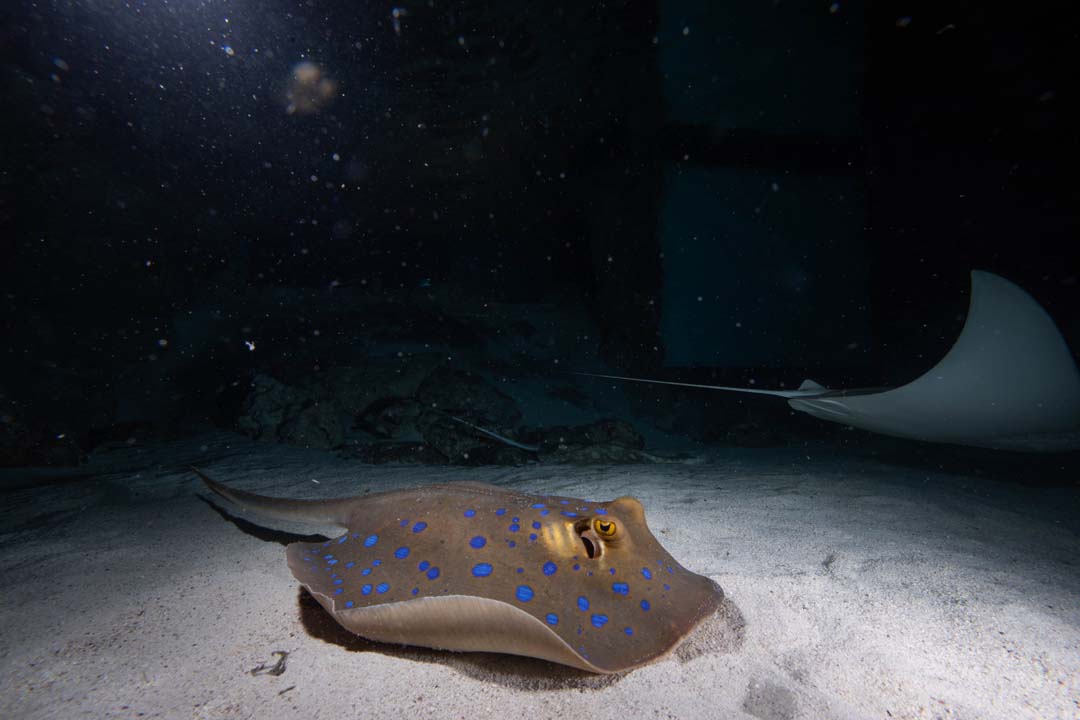
Bluespotted ribbontail ray
- Aptly named, these rays are covered in vibrant blue spots, which signal “stay away” to predators.
- They use electroreception to pick up on minor temperature differences and electrical fields, helping them find tasty hidden snacks in the sand.
Cownose ray
- Cownose rays are named for the unique shape of their head, which, when viewed from above, resembles a cow’s nose.
- These active swimmers use their pectoral fins to glide gracefully through the water with a wing-like motion.
See more photos of the Shark and Ray Touch Tank animals:
/
How to interact with the sharks and rays
This exhibit is intentionally large, giving animals the choice to either approach the front of the exhibit or to hang back and observe from a distance.
The best way to encourage a close encounter? Move slowly, then remain still. Wait for the sharks and rays to come to you. Quick movements may startle them and cause them to dart away.
When one does come by, keep a flat hand and gently touch the animal’s back, avoiding their head and tail.
See which sharks and rays you can meet at the Touch Tank exhibit during your next Aquarium visit!


